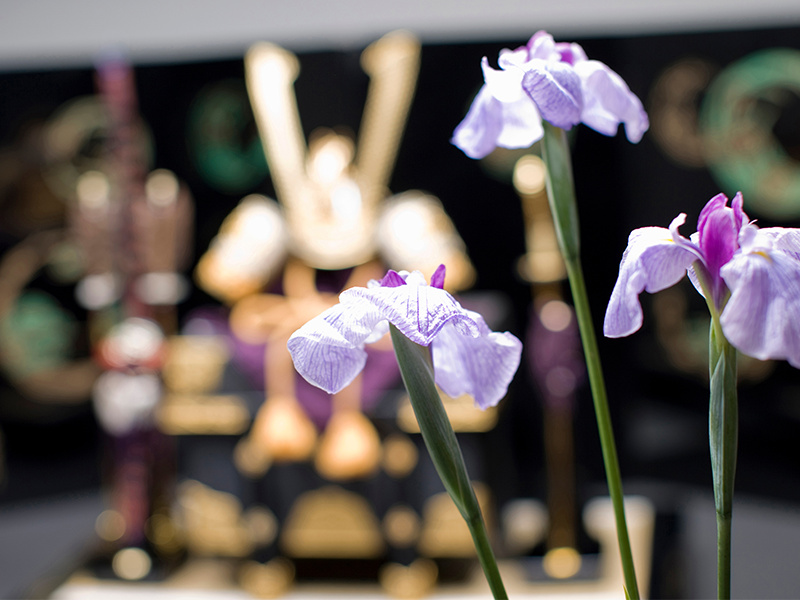HistoryHistory and Origin of Boys’ May Festival Dolls

From Samurai to Popular Culture
During the Heian period (794-1185), on Tango no Sekku (Boy’s Day), the Imperial court would place irises and lotus on the eaves, decorate crowns with irises, and hang medicinal balls made from irises on pillars. In the Kamakura period (1185-1333), the word "iris" (pronounced “Shobu”) was associated with the word "Shobu" (warrior), and it became a boys' event to wish for growth in both civilian and military life. Customs related to "iris" began to spread to the civilians as well. In the Edo period (1603-1867), Tango no Sekku became an important festival for the shogunate. When an heir was born to the shogun, many spears, naginata halberds, and helmets were erected throughout the castle. Following the grand ceremonies of the shogunate, Tango-no Sekku became an important event among civilians too. Commoners made helmets of paper and cypress, and decorated their gates with naginata and banners.
These are the origins of today's Boys' May Festival Dolls. They became larger and larger, and eventually, dolls made by professional craftsmen began to be displayed in stores and alcoves. The crafted suits of armor and helmets gradually became extremely elaborate too.
These are the origins of today's Boys' May Festival Dolls. They became larger and larger, and eventually, dolls made by professional craftsmen began to be displayed in stores and alcoves. The crafted suits of armor and helmets gradually became extremely elaborate too.